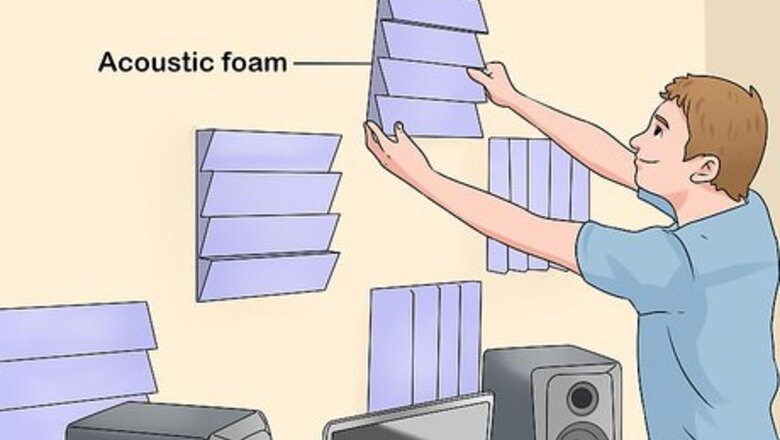
views
Measuring and Cutting the Acoustic Foam
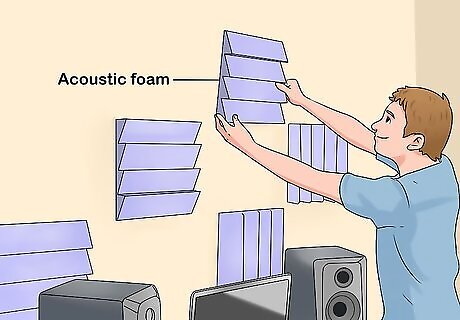
Install the acoustic foam behind your recording equipment. Sound bouncing off the walls can affect your recordings and create unwanted effects. If you create music at a mixer or desk, consider putting acoustic foam behind it. Covering an entire wall will significantly reduce sound reflection, however, you only need a single panel to notice a difference when you record. Position the foam so that it's in between both of your studio monitors or speakers. Acoustic foam will not soundproof a room. Acoustic foam should be centered on the wall and at ear level.
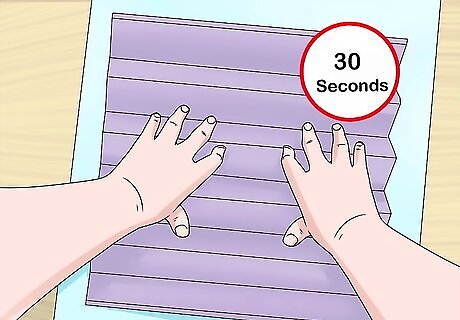
Install foam on the walls on walls opposite of your speakers. Installing foam on the wall across from your speakers will minimize how much sound bounces back into your recording device. Place panels in areas directly across from speakers to minimize how much the sound bounces. You only need a single panel for this, however larger coverage will further reduce the sound reverberations.
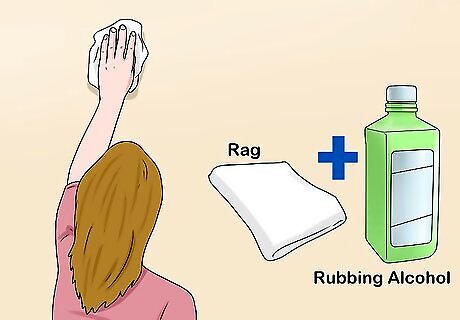
Wipe down your walls with rubbing alcohol. Use a clean rag or cloth saturated in rubbing alcohol to remove dirt from the walls that you want the foam to go on. Cleaning the walls before installing the acoustic foam will help the foam stick. Do not use regular household cleaners because it can reduce the adhesion of the foam.
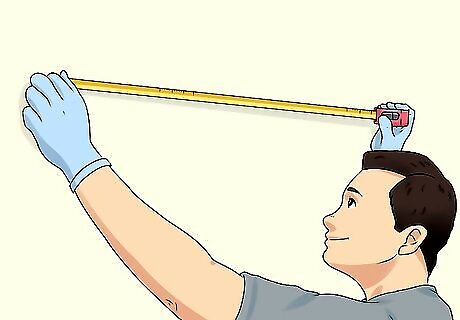
Measure the foam panels and the wall where you're installing them. Lay the foam panels on a flat surface side by side and use a tape measure to record their total length and width and record it on a piece of paper. Then, take your measurements and mark out the area on the wall where you want to install them. This will give you an idea of how much space they will take up. Small recording studios may only need a single foam panel behind the mixer. If you don’t have enough room on your wall, use fewer foam panels.
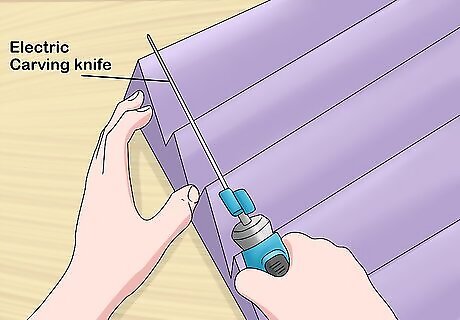
Use an electric carving knife to cut the foam panels if they don't fit. Cutting the foam with an electric knife will give it a clean edge. Hold the panel on its thin end and use a carving knife to cut down through the acoustic foam. Carefully move the carving knife down the panel to cut it to size.
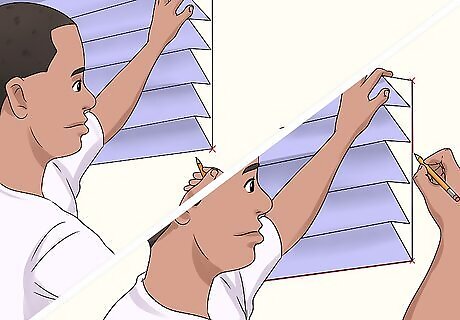
Draw an outline of the foam panels on the wall. Draw an X in each corner of the installation site according to your measurements. Line a level against each corner of the installation area and draw straight lines to create the edges for your foam panels. Doing this in advance will help you keep the panels straight as you install them. If you don't use a level, your foam panels may be crooked.
Hanging Foam Without Damaging the Wall
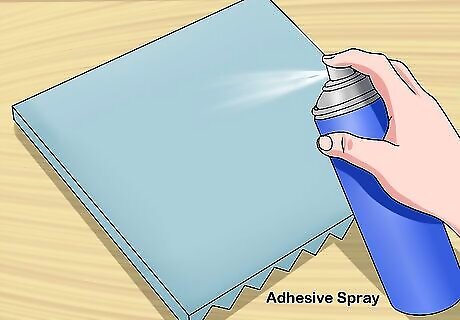
Spray the backside of the foam pieces with adhesive spray. Purchase an adhesive spray online or at an arts and crafts store. Lay the acoustic panels on the floor, bumpy side down. Spray the back of the panels in a back and forth motion, but leave the edges of the foam unsprayed to make it easier to cut later. If you have foam panels that came with adhesive on the back, you can skip this step. You can purchase adhesive spray online or at an arts and crafts store.
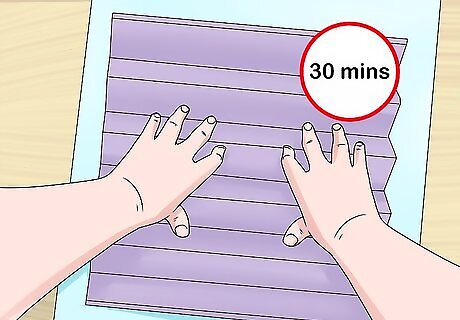
Press the foam against a piece of cardboard, adhesive side down. Gluing cardboard to the back of the foam will make it easier for the Command strips to stick to the panels. Press and hold the foam against the cardboard for 30 seconds. Using cardboard will make your acoustic foam reusable and will prevent damage to your wall.
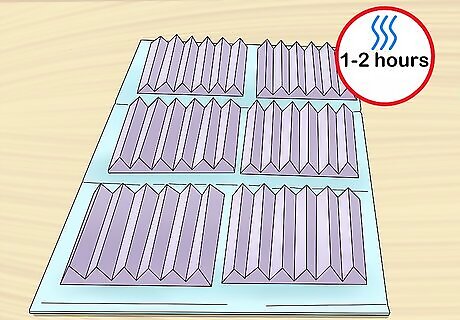
Let the glue dry. Leave the foam in a well-ventilated area for 1 or 2 hours, then check to make sure the foam is dry. The foam should remain firm on the cardboard and shouldn’t shift around when you touch it. You can put the foam in front of a window or fan to quicken the drying process.
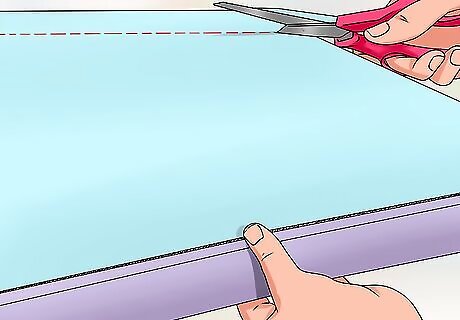
Cut off the excess cardboard around the foam. Do not cut into the foam itself. Position your scissors and cut along the inside edge cardboard. It’s okay if the foam overlaps the cardboard. No cardboard should be visible when looking at the bumpy side of the foam panels.
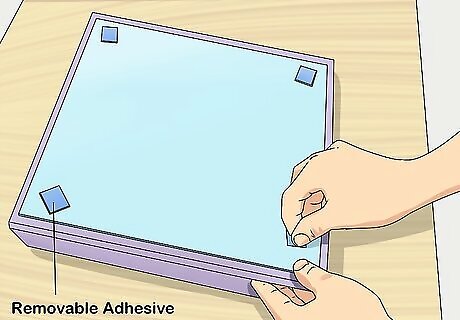
Put Command strips on the backside of the panels. Command strips are small rectangles that have an easily removable adhesive. Remove the paper tab on the Command strips and place 1 in each corner on the backside of the foam panel. Press against the Command strip for 10 seconds to make sure it stays attached to the cardboard. The Command strip should be stuck to the cardboard, not to the foam.
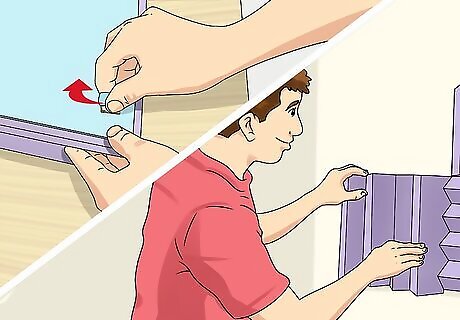
Press the acoustic foam against the wall. Remove the other paper tab to reveal the adhesive, then carefully line up your acoustic foam panel in the corner of the area that you drew before. Press the back side of the foam against the wall and hold it for 30 seconds. This should secure it in place.
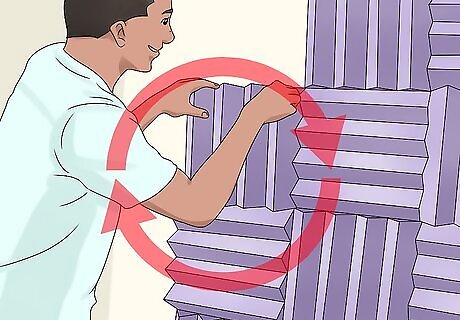
Finish installing the remaining panels. Continue repeating the steps to apply a row of acoustic foam on your wall. Continue adding more pieces of the foam until you fill up the desired space. Once all the pieces have been installed, use an eraser to remove the pencil marks that you created. Alternate the direction of the pattern on the acoustic panels for maximum effectiveness and visual appeal.

















Comments
0 comment